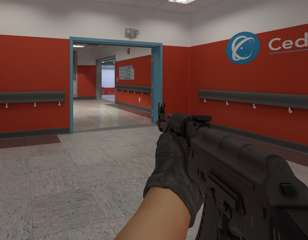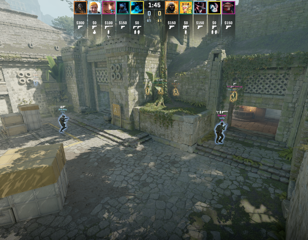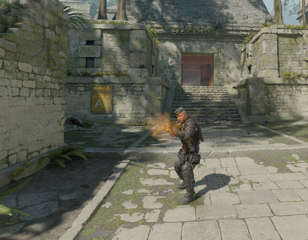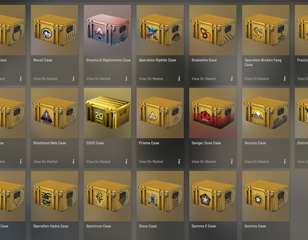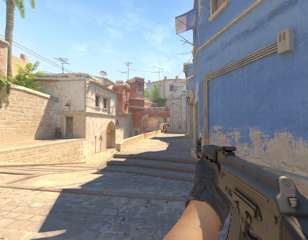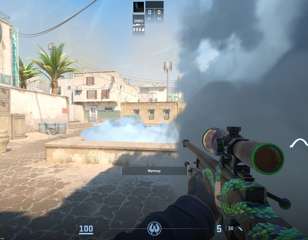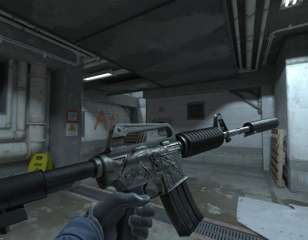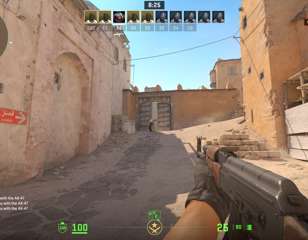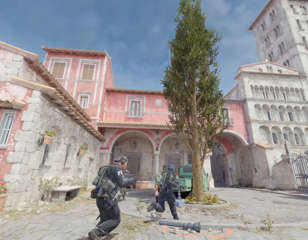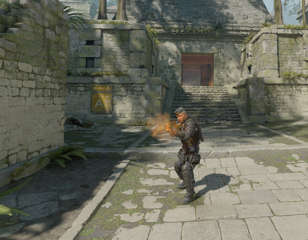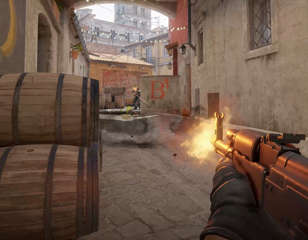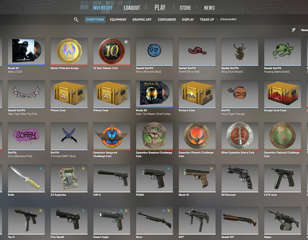
The Rarity Algorithm: Reverse-Engineering Drop Chances in CS Case-Opening
Explore the hidden mechanics behind Counter-Strike case openings, from rarity algorithms and float values to community-tested drop rates, offering insight into the virtual economies shaping modern gaming
25th Apr 2025 22:13
This is part of the ‘Counter-Strike’ directory
Directory contents
-
Best Graphics Settings
-
Pro Crosshair Codes
-
Best Launch Options
-
Bob Settings
-
Change Brightness
-
Jumpthrow Bind
-
Left-Hand View
-
Stretched-Res
-
Hide UI
-
VALORANT Sensitivity
-
Show FPS
-
Crosshair Customisation
Counter-Strike (CS) case-opening remains one of the most analysed elements of modern gaming due to its combination of virtual economies and statistical uncertainty. For each player opting to try opening cases now, a selection of cosmetic weapon skins awaits, each assigned a specific rarity tier. These tiers, ranging from Consumer Grade to Covert and occasionally including exceedingly rare items like knives or gloves, follow a probability structure that is obscured from public documentation.
However, data gathered through community testing, bulk openings, and empirical analysis allows approximation of the rarity algorithm that drives item drops. As this system underpins a substantial portion of community trading and third-party marketplaces, understanding its framework holds value far beyond simple curiosity.
Data-Driven Inference and Patterns
Researchers within the gaming analytics community have explored drop patterns using large sample sizes and probabilistic modelling. Consistent findings indicate fixed percentages for each tier, with Consumer Grade hovering around 79.92%, Industrial Grade at 15.98%, with progressively lower chances assigned to higher rarities.
Classified items appear at an estimated 3.2%, while Covert sits close to 0.64%. Special items, including knives and gloves, are believed to carry a drop rate of approximately 0.26%. These values, although unofficial, have maintained statistical consistency across thousands of samples, suggesting a pseudo-random algorithm with built-in distribution ceilings. This consistency supports the concept of systemic regulation, limiting deviation across global accounts regardless of player location or activity level.
Hidden Mechanics and Float Values
In addition to rarity tiers, each weapon skin carries a float value determining wear level, which ranges from Factory New to Battle-Scarred. This float is determined at the moment of drop and follows its own probabilistic range within each skin's defined boundaries. For example, skins restricted to Minimal Wear and worse will never appear in Factory New condition, regardless of chance.
Reverse-engineering float distributions reveals Gaussian-like curves in wear outcomes, implying another layer of pseudo-random assignment within the rarity algorithm. These insights have contributed to more informed trading, particularly when calculating the likelihood of high-float versus low-float items within sought-after collections.
The Impact of StatTrak and Trade-Up Contracts
An additional complexity arises with StatTrak items, which track in-game kills and are considered premium variants. These items appear as a separate roll after rarity is determined, cutting overall chances for a specific item in half when considering both standard and StatTrak versions. Meanwhile, Trade-Up Contracts introduce further intricacy; these allow ten lower-tier skins to be exchanged for one higher-tier skin.
However, the resulting skin is influenced by the floating averages and collections of the inputs, reintroducing probabilistic design into what may appear to be a deterministic system. This layered probability architecture rewards an understanding of input parameters and case-specific outcomes—such mechanics add depth to the metagame, appealing to players engaged in optimisation of returns from in-game investments.
Case Composition and Skin Pool Influence
The composition of a case's skin pool directly influences the perceived value and attractiveness of opening that case. Some cases contain universally desirable Covert skins while others are known for higher-value knife or glove drops. Meanwhile, the presence of rare special items and the design of the skin pool affect average case value and risk-reward profiles.
Analysts estimate the expected value (EV) of each case through the aggregation of market prices and drop probabilities, providing insights into whether a case statistically offers a net gain or loss over time. This practice has also given rise to popularity rankings and case-picking strategies, where drop desirability becomes a central factor in user engagement.
Community Testing and Algorithm Transparency
A significant portion of knowledge surrounding drop rates has come from community experiments and aggregated drop data. Multiple independent studies have confirmed consistent drop rates across different accounts and periods, supporting the theory of a universal drop algorithm unaffected by player behaviour or inventory history.
However, the absence of official transparency leads to continued speculation regarding subtle mechanics such as account-based seed variations or dynamic probability shifts. Despite this, the prevailing consensus accepts the basic tier percentages as functional constants. Forums and third-party tools often aggregate this data, allowing for real-time monitoring of perceived anomalies or drop rate trends.
Broader Implications for Virtual Economies
The reverse-engineering of the CS case rarity algorithm offers broader implications for virtual economies and digital asset management. Understanding these probabilities equips traders and players with tools for market forecasting and strategic decision-making. Thus, the algorithm serves as a model of synthetic scarcity and perceived value within controlled digital domains.
It also raises ongoing questions regarding regulation, informed consent and ethical transparency in games that integrate randomised monetisation features. Ultimately, the algorithm represents a calculated balance between randomness and design, carefully structured to sustain engagement and economic viability. As other gaming ecosystems adopt similar systems, comprehension of these mechanics becomes essential for evaluating digital asset ecosystems at large.

About The Author
Jake Bannister
Jake is GGRecon's Co-Founder and Operations Director. You'll find him covering our word game brain teasers, as well as sports games such as Football Manager and EA FC. He's also that teammate on your Rocket League team spamming "Wow!".
This is part of the ‘Counter-Strike’ directory
Directory contents
-
Best Graphics Settings
-
Pro Crosshair Codes
-
Best Launch Options
-
Bob Settings
-
Change Brightness
-
Jumpthrow Bind
-
Left-Hand View
-
Stretched-Res
-
Hide UI
-
VALORANT Sensitivity
-
Show FPS
-
Crosshair Customisation



